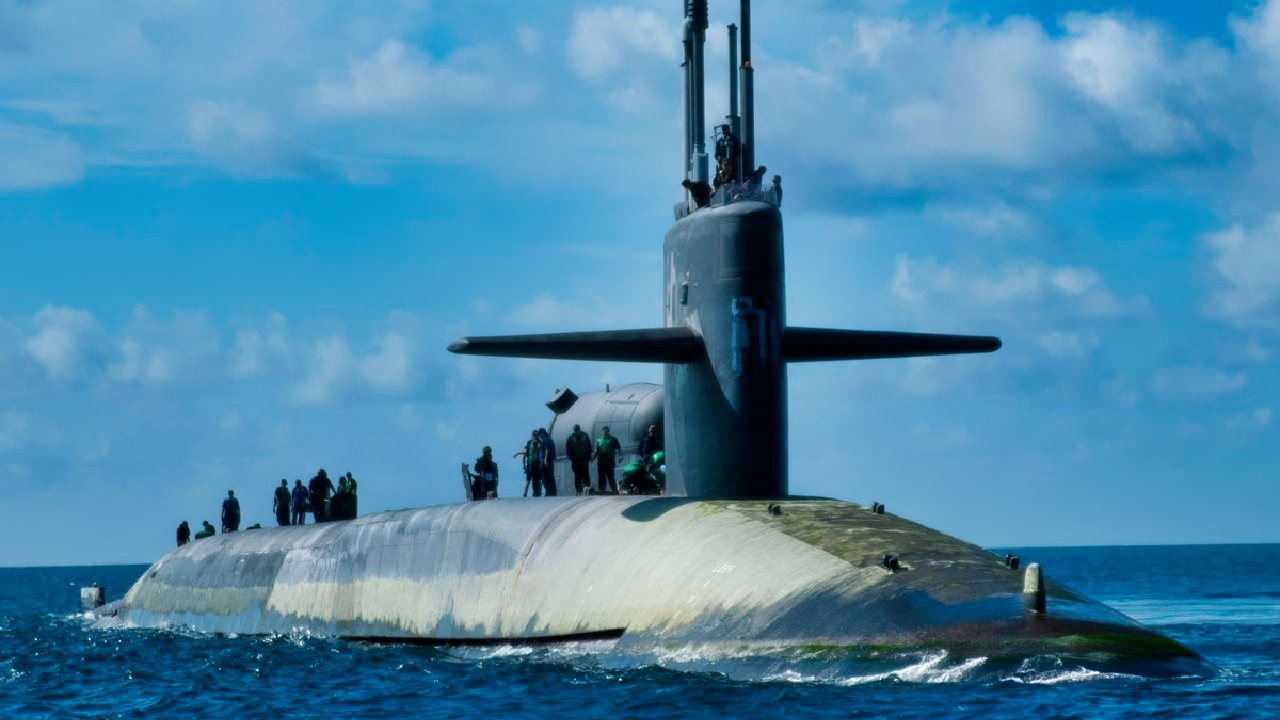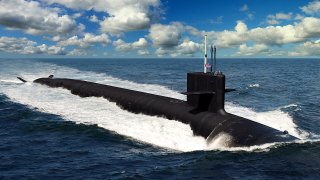Analysis: The Navy's Columbia-Class Submarine Is Becoming a Nightmare
The U.S. Navy's Columbia-class nuclear-powered ballistic missile submarines, intended to replace the aging Ohio-class, face significant delays and rising costs. The lead boat, USS District of Columbia (SSBN-826), is now expected to be delivered 16 months later than initially planned, potentially in FY28 instead of FY27.
Summary: The U.S. Navy's Columbia-class nuclear-powered ballistic missile submarines, intended to replace the aging Ohio-class, face significant delays and rising costs. The lead boat, USS District of Columbia (SSBN-826), is now expected to be delivered 16 months later than initially planned, potentially in FY28 instead of FY27. This delay, primarily due to contractor issues in delivering essential components like the bow section and power generators, has prompted concerns over maintaining a robust nuclear deterrent. As a result, the Navy may need to extend the service life of some Ohio-class submarines to ensure continuous naval presence. The delays have drawn scrutiny from lawmakers, particularly during a recent hearing on the Navy's fiscal 2025 shipbuilding plans. Despite these challenges, the Columbia-class submarines represent a crucial component of future U.S. naval strategy, although their high costs and development hurdles continue to be points of contention.
Delays and Rising Costs Plague the U.S. Navy's Columbia-Class Submarine Program
The United States Navy's future Columbia-class nuclear-powered ballistic missile submarines – which are set to replace the aging Ohio-class boats – will eventually become a major component of the nation's nuclear triad.
Each of the planned dozen boats will be equipped with sixteen SLBM tubes, as opposed to twenty-four SLBM tubes on the Ohio-class SSBNs. That was meant to reduce construction, operations, and maintenance costs. In addition, the new ballistic missile submarines will utilize the joint American-British developed Common Missile Compartment (CMC), which will also be installed on the Royal Navy's new Dreadnought-class submarines. It was designed to launch the Trident II D5 intercontinental ballistic missile (ICBM). The joint effort has been reported to save each nation hundreds of millions of dollars.
On paper, the Columbia-class is just what the U.S. Navy needs to accomplish its nuclear deterrence mission. Back in reality, the situation is quite dire.
At issue is the fact that there is now a delay of as much as 16 months in delivering the lead boat, the future USS District of Columbia (SSBN-826). It was previously reported that the submarine could be delivered in Fiscal year 2028 (FY28) instead of the previously planned FY27 delivery.
On Wednesday, according to Bloomberg, the future SSBN-826's delay could be as much as 16 months, and it stems from contractor delays in delivering the vessel’s bow section and power generators, according to an internal assessment by the service.
Lawmakers Are Taking Notice
The delays impacting the Columbia-class has been a seen as very serious, as it could force the U.S. Navy to keep the Ohio-class in service longer than expected. The original plan called for the first of the SSBNs to be retired beginning in 2027, with an additional boat leaving the service every year until 2040. Navy officials have said it could be possible to extend the service life of at least five of its Ohio-class subs by two to three years each so that the force would remain at 12 vessels or more for all but three years between 2024 and 2053.
That might not be good enough for lawmakers on Capitol Hill, as the House Armed Service's seapower subcommittee held a hearing Wednesday to review the sea service's fiscal 2025 shipbuilding request as well as this month’s review by the service of its ship programs.
Contractor Issues – Delays and More Delays
According to the report from Bloomberg, General Dynamics Corp. and Huntington Ingalls Industries (HII) were charged with designing and constructing the 12-boat class, a roughly $130 billion program, with each sub assembled from six large hull segments.
During construction, the so-called "super modules" are each outfitted with systems and connections before final assembly by General Dynamics. Ideally, this would speed the production.
However, HII was to ship the bow in May 2025 from its Newport News, Virginia, yard to the General Dynamics facility in Groton, Connecticut. It is now estimated for June 2026, or 13 months late, according to internal service figures. The reason for the delays hasn't been made public.

HII said in a statement that it "experienced first-in-class challenges on a complex welding sequence," which required revising the plan for "the largest submarines ever built in the US." It further stated that the revised plan "was successfully executed and is now incorporated on follow-on ships."
In addition, Northrop Grumman Corp., which the U.S. Navy contracted to deliver the first ship's turbine generators by November 2021, had planned to provide months of margin before those components would be needed. Instead, the turbine generators are projected to be delivered in early 2025, further impacting the schedule. Each of the submarines has two generators that provide the vessel's propulsion and electrical power requirements.
Worth it in the End?
While the submarines may be running late, they'll be worth it in the end – that is if they actually deliver. Maya Carlin, writing for The National Interest, also warned that the Columbia-class is on track to become one of the costliest Pentagon programs to ever be developed.
Though the total lifecycle price for the entire class is estimated at nearly $348 billion, including the projected costs to develop and purchase the 12 submarines and maintain them through the early 2040s, if they don't live up to the task, the U.S. Navy will be out more than just time and money.
Author Experience and Expertise: Peter Suciu
Peter Suciu is a Michigan-based writer. He has contributed to more than four dozen magazines, newspapers, and websites with over 3,200 published pieces over a twenty-year career in journalism. He regularly writes about military hardware, firearms history, cybersecurity, politics, and international affairs. Peter is also a Contributing Writer for Forbes and Clearance Jobs. You can follow him on Twitter: @PeterSuciu.
You can email the author: [email protected].


